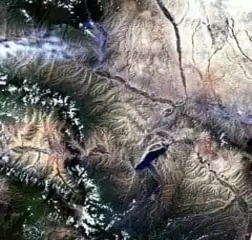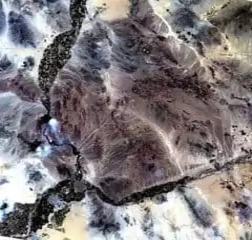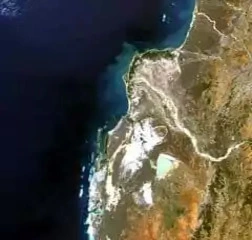Landsat 5 (TM) Satellite Images
Since 1984, Landsat 5 has gathered more than 700,000 images and observed climate change, agricultural practices, development and urbanization of cities, ecosystem evolution, and increasing demand for natural resources.
The Landsat Thematic Mapper (TM) sensor was carried on Landsat 4 and Landsat 5, and created images consisting of six spectral bands with a spatial resolution of 30 meters for Bands 1-5 and 7, and one thermal band (Band 6). The approximate scene size is 170 km north-south and 183 km east-west (106 mi by 114 mi). TM could not resolve individual houses or trees, but it could record areas where houses had been constructed or forests had been cleared.
Landsat 5 (TM) Characteristics
| Characteristic | Description |
|---|---|
| Participants |
|
| Launch Date | March 1, 1984 |
| Vehicle | Delta 3920 |
| Site | Vandenberg Air Force Base, California |
| Spacecraft |
|
| Communications |
|
| Orbit |
|
| Sensors |
|
| Scene size | 170 km x 185 km (106 mi x 115 mi) |
| Design life | Minumum of 3 years |
Copyright © U.S. Geological Survey
Landsat 5 (TM) Bands
| Sensor | Band number | Band name | Wavelength (μm) | Resolution (m) | Band Applications |
|---|---|---|---|---|---|
| TM | 1 | Visible Blue | 0.45 – 0.52 | 30 | Bathymetric mapping, distinguishing soil from vegetation, and deciduous from coniferous vegetation |
| TM | 2 | Visible Green | 0.52 – 0.60 | 30 | Emphasizes peak vegetation, which is useful for assessing plant vigo |
| TM | 3 | Visible Red | 0.63 – 0.69 | 30 | Discriminates vegetation slopes |
| TM | 4 | NIR | 0.76 – 0.90 | 30 | Emphasizes biomass content and shorelines |
| TM | 5 | SWIR 1 | 1.55 – 1.75 | 30 | Discriminates moisture content of soil and vegetation; penetrates thin clouds |
| TM | 6 | Thermal | 10.40 – 12.50 | 120 | Thermal mapping and estimated soil moisture |
| TM | 7 | SWIR 2 | 2.08 – 2.35 | 30 | Hydrothermally altered rocks associated with mineral deposits |
Copyright © U.S. Geological Survey




